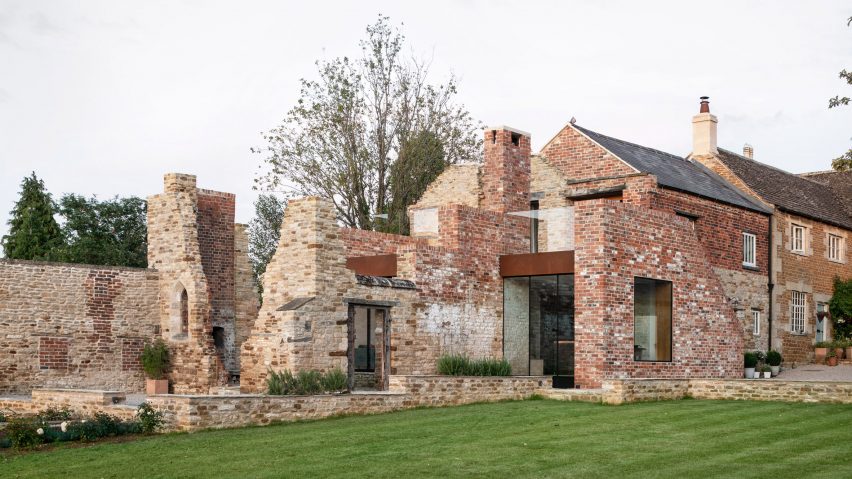
The Parchment Works house extension built inside ruined stone walls
The ruins of a 17th-century parchment factory and old cattle shed form part of a residential extension by Will Gamble Architects in Northamptonshire, UK.
Named The Parchment Works, the extension introduces an open-plan kitchen, living and dining area to a listed Victorian house.
It was designed by Will Gamble Architects for a semi-retired couple who desired an open and unique counterpoint to the dwelling's otherwise truncated interior.
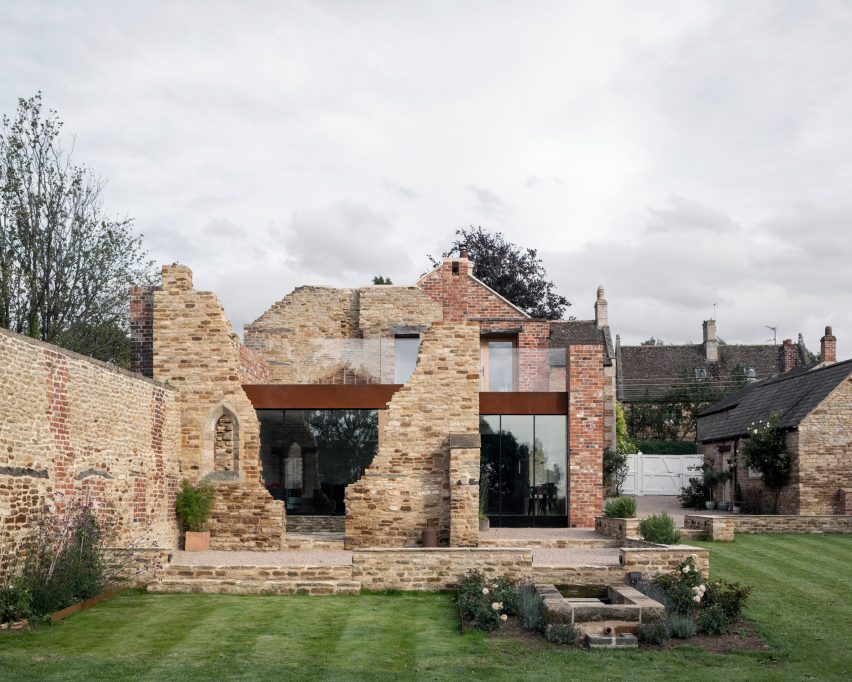
The client's brief for the studio asked that the home's adjoining cattle shed was converted, but that the adjacent ruin – remnants of a factory built in the 1600s to produce parchment paper – was demolished.
However in recognition of the ruin's historical significance, Will Gamble Architects instead proposed preserving and celebrating it by inserting the extension within its masonry walls.
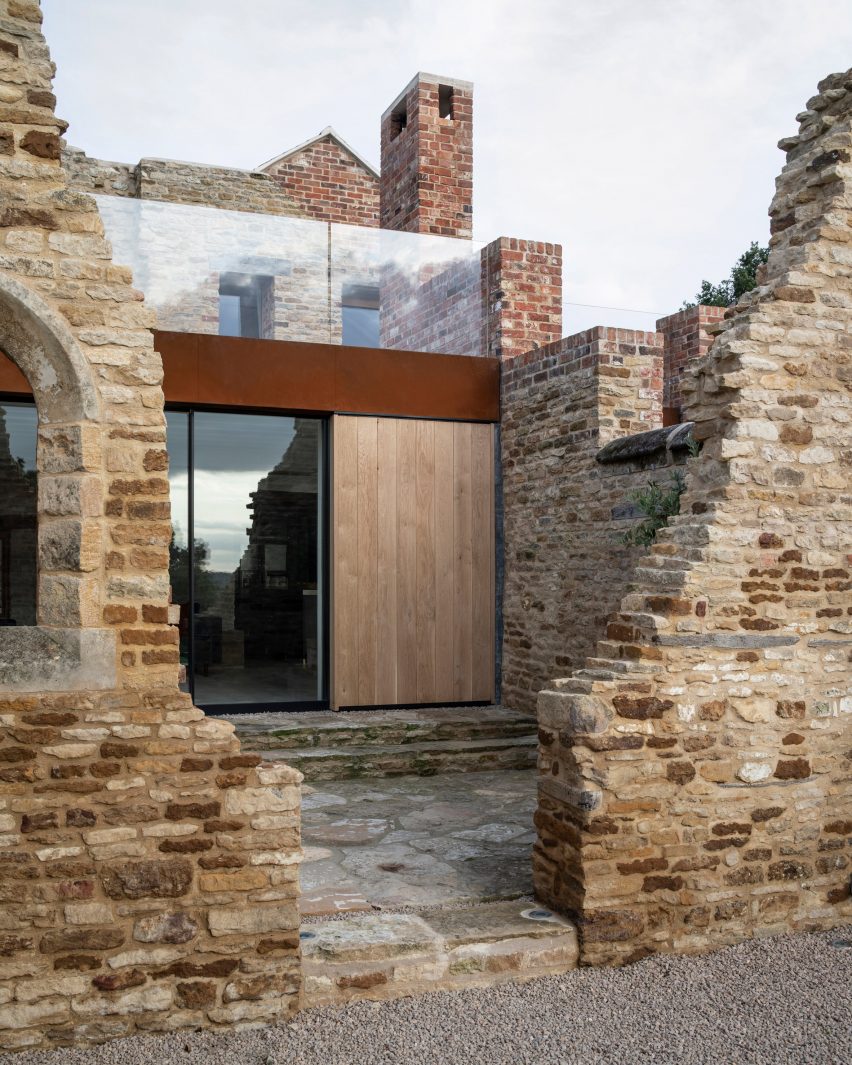
"The ruin was built in the 1600s and is the oldest part of the house," said the studio's director Will Gamble.
"Despite falling into disrepair the ruin was a very important building within the community and further a field – it used to produce parchment paper and was rumoured to have made paper for members of the royal family," he told Dezeen.
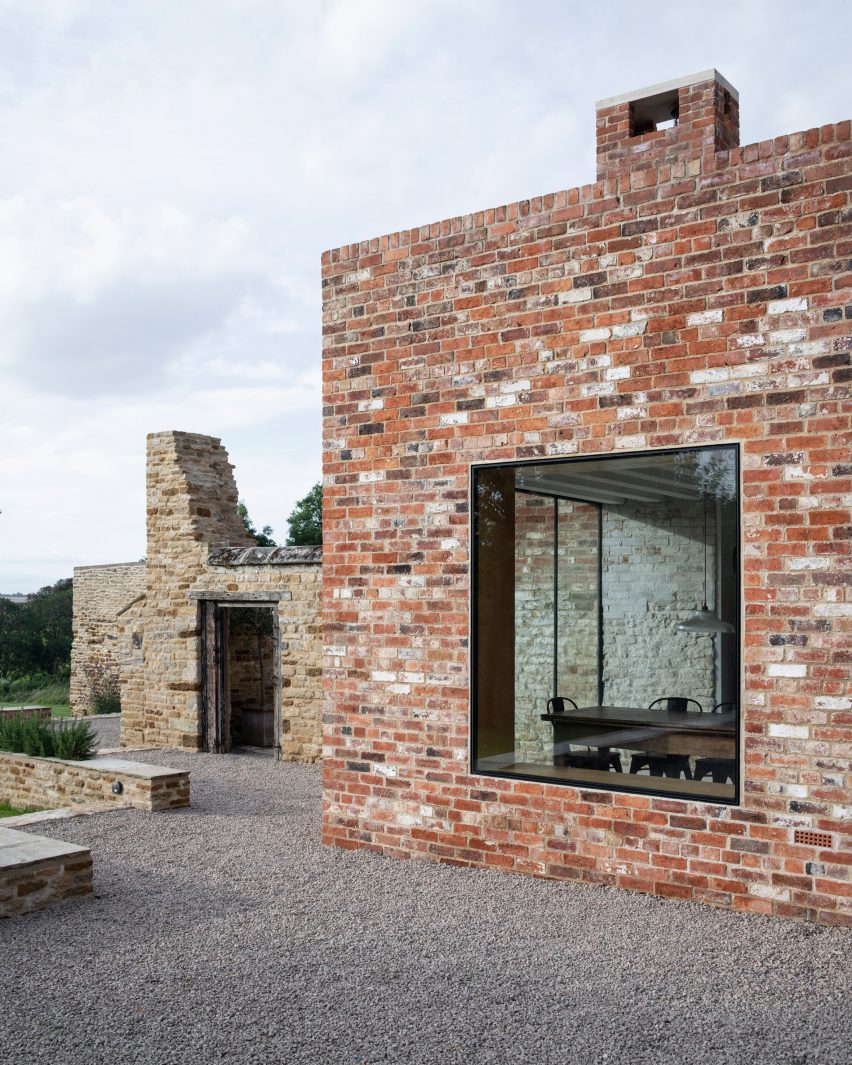
"It has real charm both historically and aesthetically," Gamble continued. "It was very much part of the character of the building as a whole and therefore we felt strongly that it needed to be preserved and celebrated."
"It ended up being the driving force behind the entire scheme and the change in approach was eventually well received by both the client, the planners and Historic England."
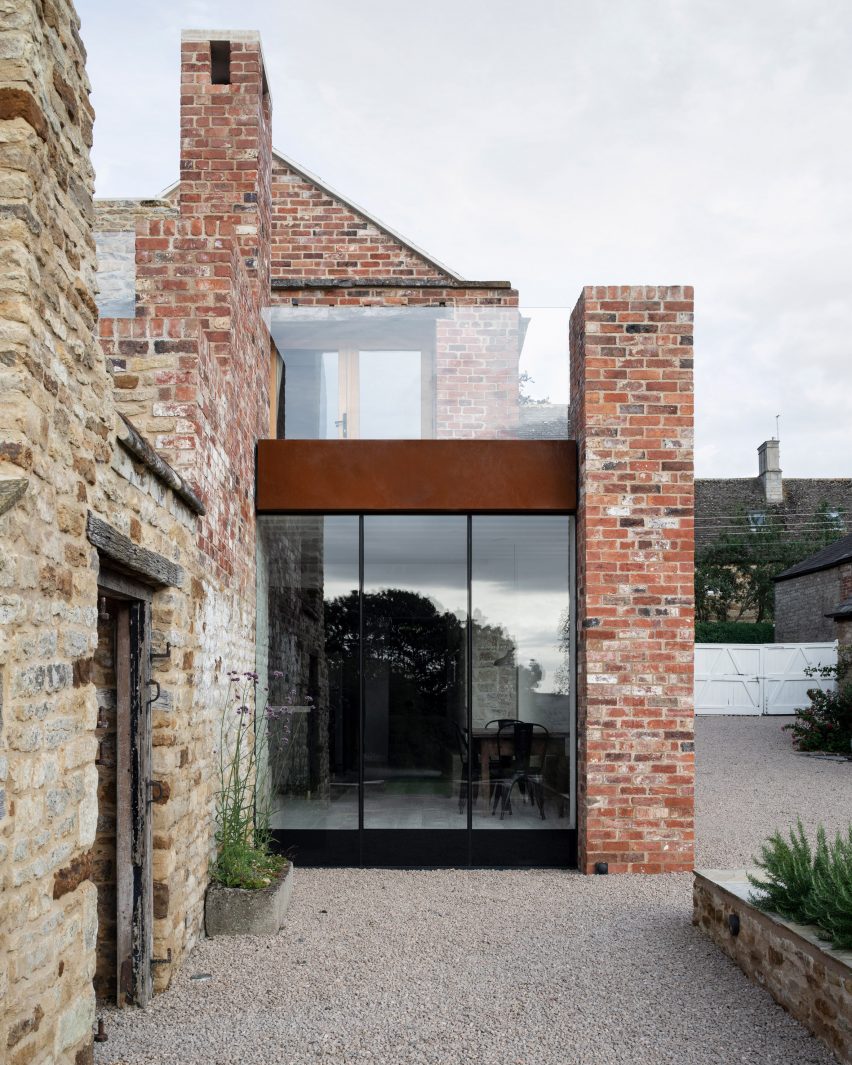
The Parchment Works' extension has a stepped form, measures a single-storey in height, and occupies one half of the ruins footprint.
This was designed by Will Gamble Architects to reduce the visual impact of the structure and ensure it is subordinate to the ruin.
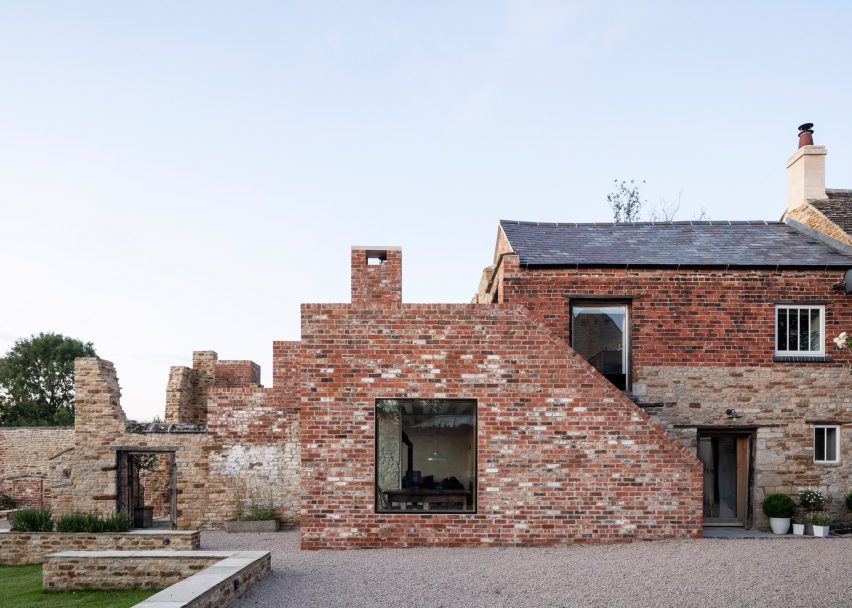
"At first we looked at infilling the entire ruin but felt that the character and appearance of the ruin walls internally were just as if not more important than their exterior," Gamble explained.
"We therefore infilled half of the ruin and left the remaining half untouched to expose the internal face of the walls."
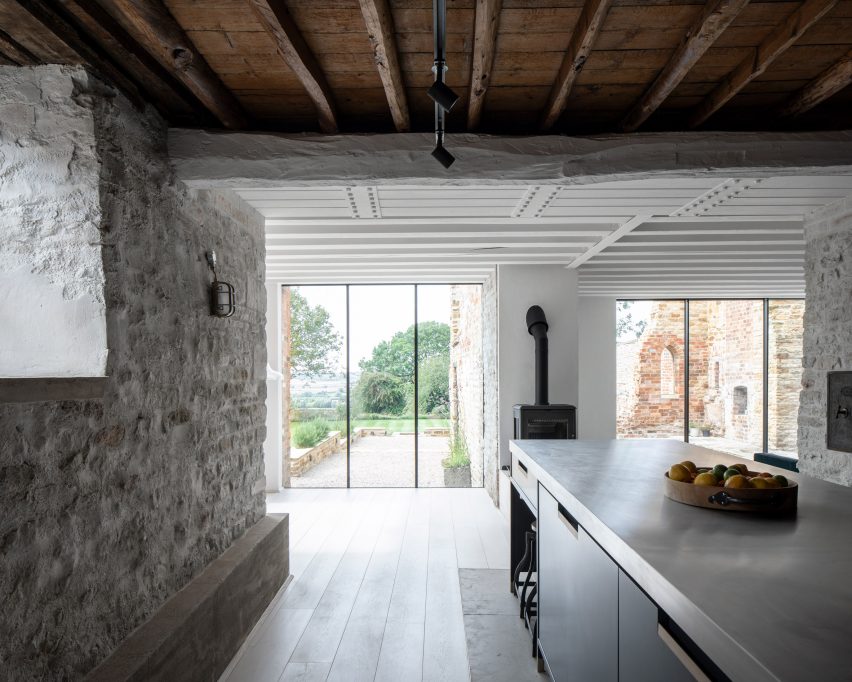
By filling in half of the ruin's footprint in this way, Will Gamble Architects was able to incorporate a courtyard on the ground floor.
Meanwhile, its single-storey height enabled the studio to incorporate a roof terrace above that is accessible from the existing master bedroom on the first floor of the house.
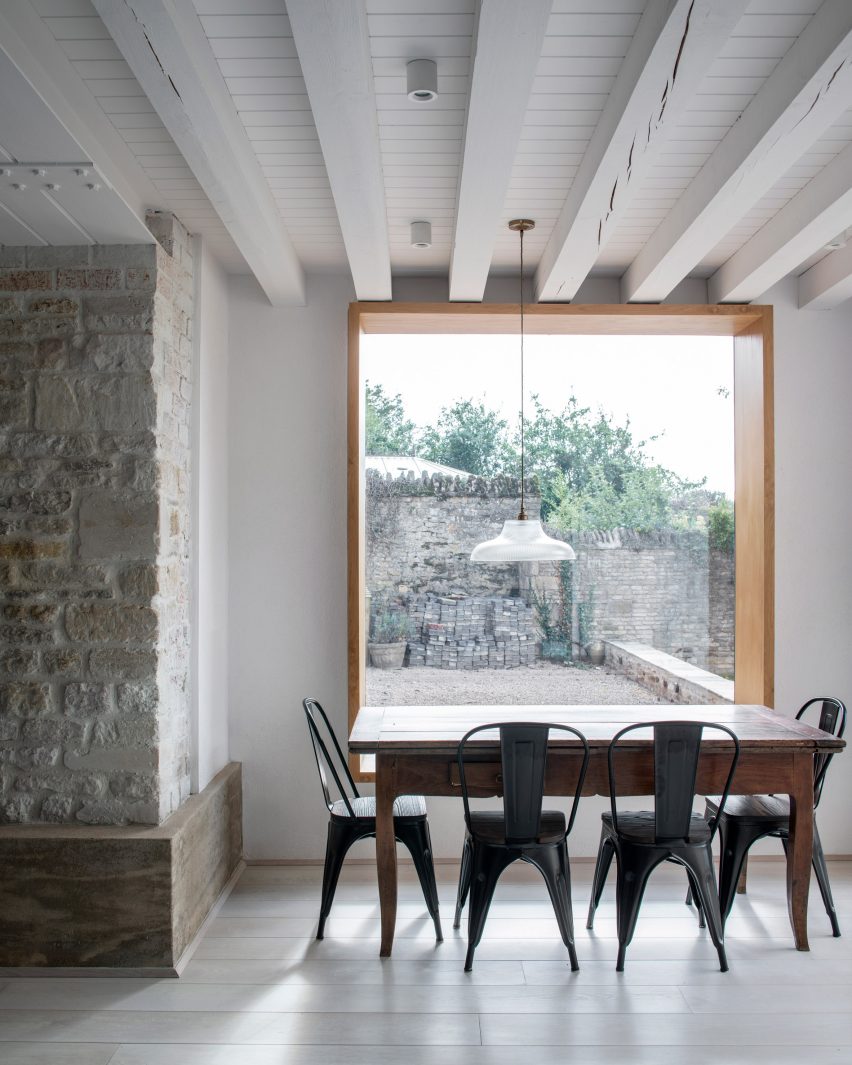
The materiality of extension was dictated by the studio's ambition to use as many materials found on site from factory's outbuildings that once occupied it.
Salvaged local bricks form the walls of the extension, while stone slabs from the floor of the old parchment factory line the base of the courtyard.
Elsewhere, five-metre-long oak beams found on the site were also cut down to be create lintels for the extension's doors and windows. This is paired with contemporary weathered steel and wood detailing.
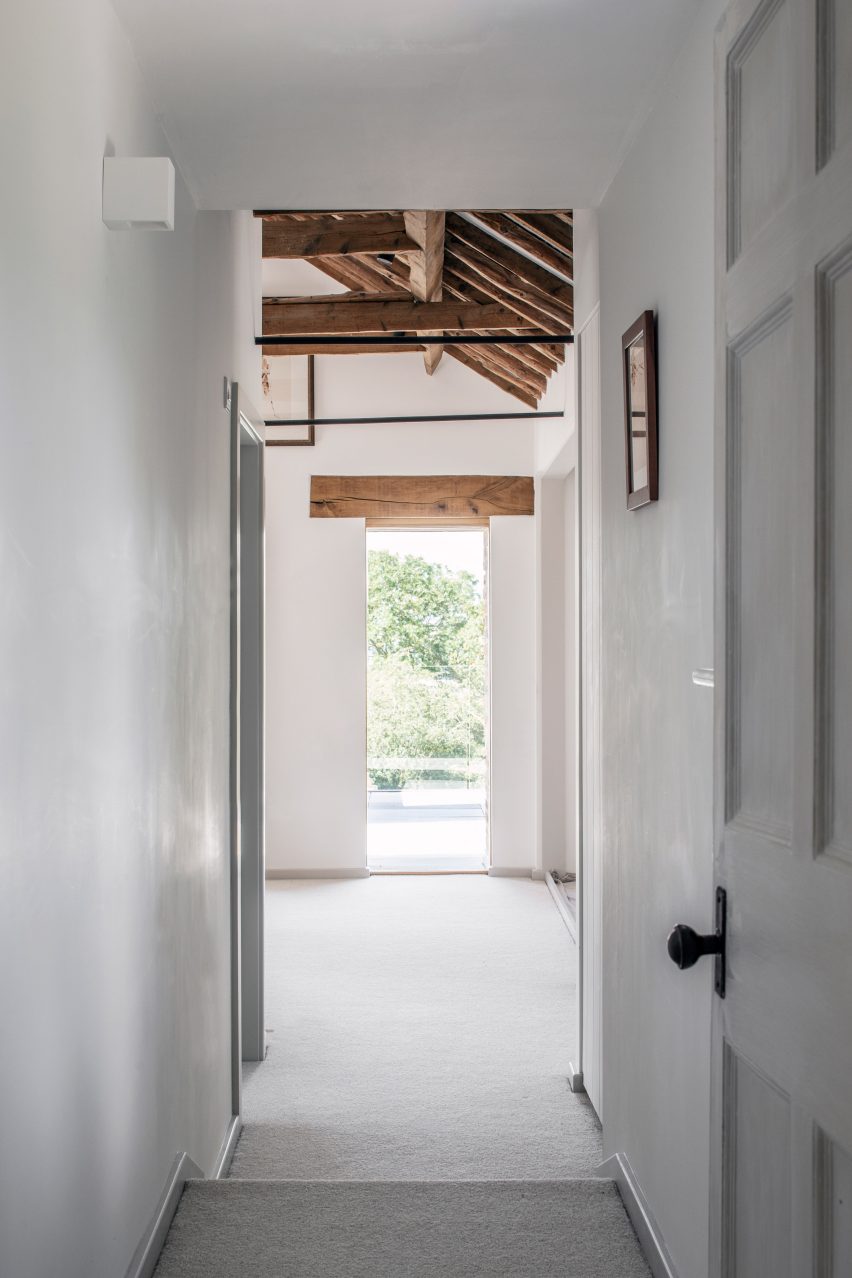
Will Gamble Architects' ambition to preserve the history of the site is also evident inside The Parchment Works, where timber joists from the cattle shed and the ruin's masonry walls are visible throughout the extension.
"The concept behind the interiors was to go for an honest palette of materials that celebrated the architecture of the cattle shed and the ruin," Gamble explained.
"We tried to preserve the character of the ruin and the cattle shed as much as possible by leaving most of what was already there uncovered."
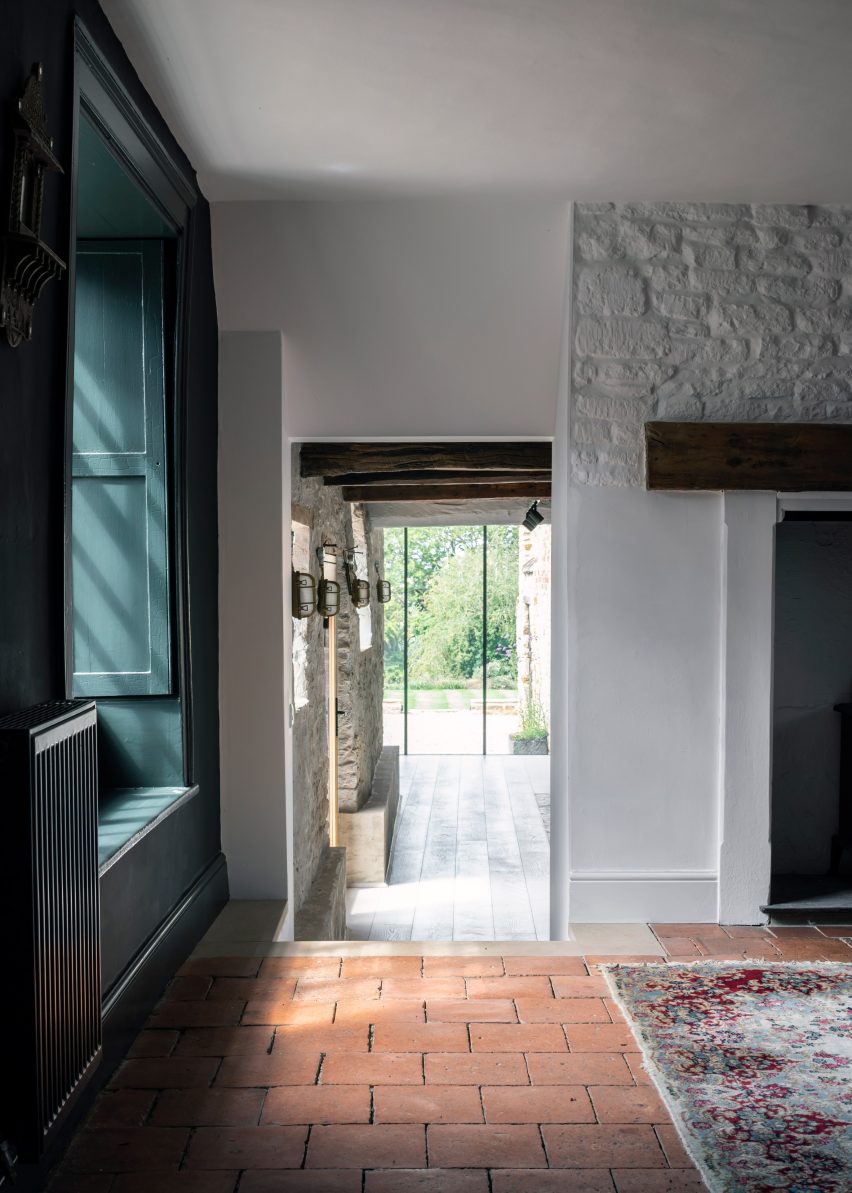
Elements of the new structure for the extension, including oversized timber joists and white-painted steels, are also exposed inside in an effort to "continue the concept of celebrating the bones of the building".
These are teamed with a minimal backdrop of white-washed oak floorboards with a chunky concrete skirting, and walls with a textured sand and cement render finish.
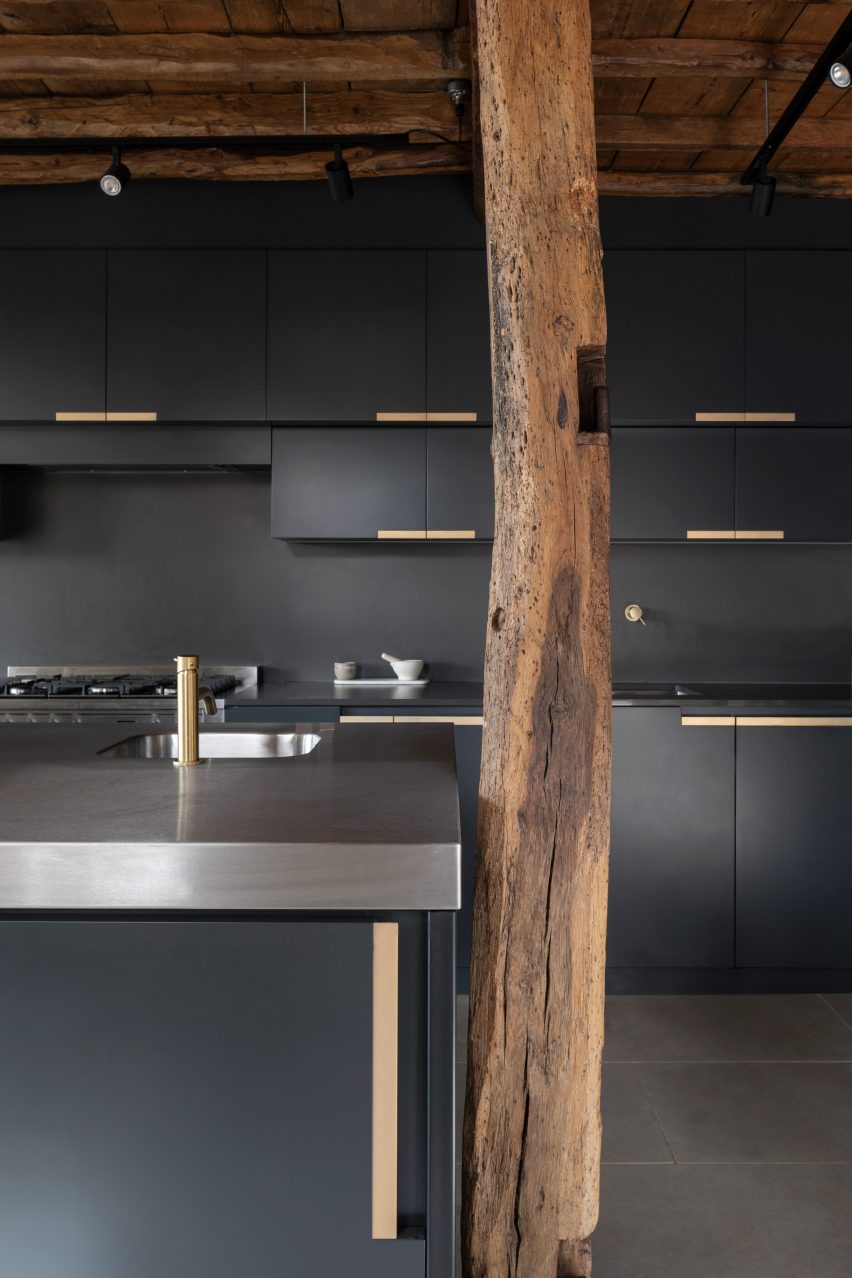
According to Will Gamble Architects, the original Parchment Works was built on the site because of a natural spring that runs under the building. This water was used to clean the hides from which the parchment was made, by lowering them into a series of baths.
As part of the project, the studio opened up one of these underground baths to create a water feature. This also doubles as a dry well to dispose of surface runoff.
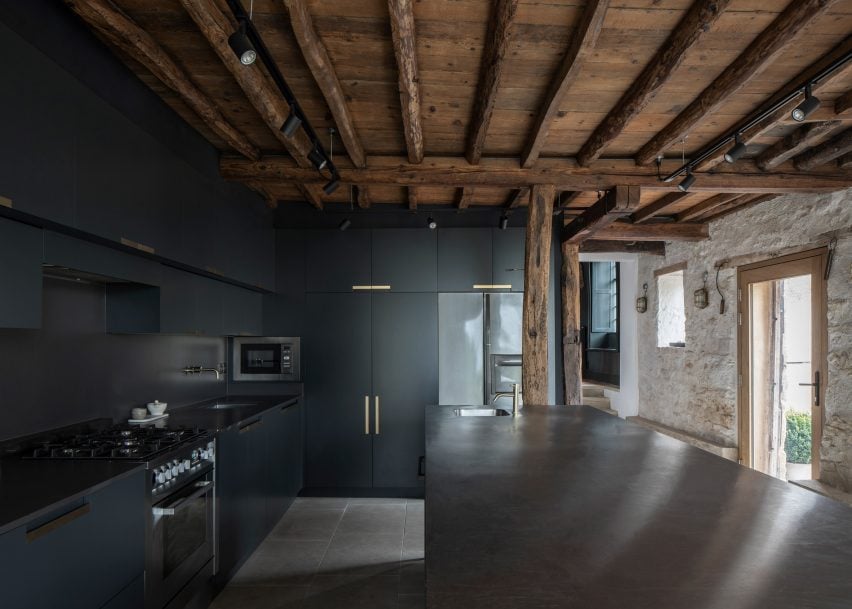
Other homes built from ruins featured on Dezeen include the Astley Castle in Warwickshire by Witherford Watson Mann, which won the RIBA Stirling Prize in 2013.
More recently, architecture studio Arquitectura-G transformed a crumbling stone structure in the medieval village of Palau-Sator, Spain into a contemporary family dwelling.
Photography is by Johan Dehlin.